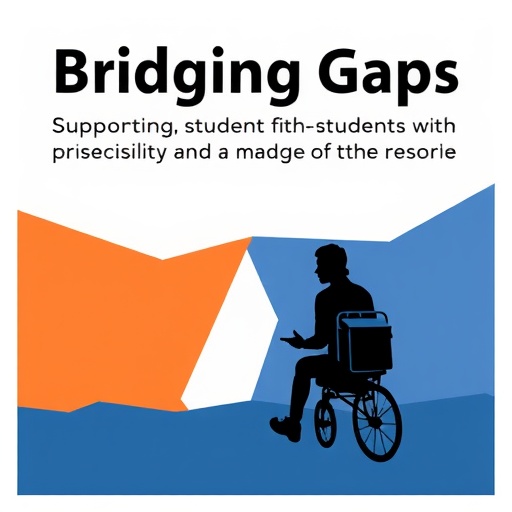In an era defined by inclusion and equity, the educational landscape for students with disabilities remains fraught with challenges that significantly hinder their academic success. Despite advances in educational policy and practice aimed at supporting these individuals, discrepancies in their educational outcomes persist. According to research conducted by Wells (2025), this disparity underscores an urgent need for comprehensive postsecondary support systems that not only accommodate but also empower students with disabilities.
The findings indicate that while many institutions have made strides toward inclusivity, the reality for students with disabilities paints a more complex picture. Across various postsecondary settings, students with disabilities encounter obstacles that range from inaccessible physical environments to insufficient academic resources and inadequate training for educators on how to support diverse learning needs. As a result, these individuals often face a stark contrast in educational attainment when compared to their non-disabled peers, leading to prolonged inequities in employment opportunities and socioeconomic status.
One fundamental aspect of supporting students with disabilities involves understanding the types of disabilities that can affect learning. These can span from physical disabilities that impact mobility to learning disorders such as dyslexia and attention deficit hyperactivity disorder (ADHD). Each category requires tailored approaches to ensure that educational institutions are not just compliant with legal standards, but are actively fostering an environment in which all students can thrive. Understanding this spectrum of needs is crucial for determining effective support measures.
Wells emphasizes that the current provisions for these students in many educational institutions often fall short. While accommodations such as extended testing times or note-taking services are commonplace, they may not be sufficient or effective within an educational system that is not fully equipped to meet diverse needs. The lack of training for faculty members in recognizing and addressing these issues further compounds the problem. Therefore, it is essential for educational leaders to prioritize professional development opportunities related to disability support.
One of the most significant findings from Wells’ research is the correlation between comprehensive support services and improved educational outcomes for students with disabilities. Programs that actively engage with students, offering them academic coaching, mentorship, and social integration, play a pivotal role in their success. Such frameworks not only validate the students’ experiences but also provide essential resources and strategies that help them navigate the complexities of higher education.
Moreover, Wells points out that the integration of technology into learning environments presents an opportunity for innovative solutions to disability support. Assistive technologies can facilitate more personalized learning experiences, allowing students with different disabilities to interact with course materials in ways that suit their individual learning styles. For instance, text-to-speech software can greatly assist students with visual impairments, while organizational apps can support those with ADHD in managing tasks and deadlines. However, the implementation of such technologies must be accompanied by sufficient training for both students and educators to maximize their potential.
The role of mental health is another critical consideration in supporting students with disabilities. Emotional and psychological challenges can often accompany physical disabilities and learning disorders, affecting academic performance and overall well-being. Institutions must recognize the importance of mental health resources in tandem with educational support. Creating a culture that encourages seeking help and provides accessible mental health services can ultimately contribute to a more holistic approach to student success.
Wells’ study also highlights the disparity of resources across different institutions. Smaller colleges and community colleges may lack the financial or infrastructural backing to provide comprehensive support, leading to a patchwork of availability. This inequity raises questions about the accountability of educational systems to ensure all students, regardless of their institution’s resources, have access to the necessary tools for success. Advocacy for policy changes that mandate equitable funding for support services can help bridge this gap.
Additionally, the research points to the importance of creating community connections. Building partnerships between educational institutions and local organizations can enhance support systems significantly. Collaborations with non-profits, advocacy groups, and the disabled community can provide additional resources and expertise that benefit students with disabilities. Such synergies not only enrich the educational experience but also help create pathways to employment post-graduation.
As we look to the future, a proactive approach is essential for reshaping educational policies regarding students with disabilities. This means moving beyond compliance with existing laws such as the Americans with Disabilities Act (ADA) to fostering genuinely inclusive campuses. Institutions must actively seek feedback from students with disabilities to inform policies and practices, ensuring they remain relevant and effective in addressing current challenges.
Ultimately, Wells articulates a vision for a comprehensive support system that not only addresses the academic needs of students with disabilities but also fosters their overall personal growth and success. By prioritizing inclusivity through systematic changes and community engagement, educational institutions have the potential to transform the experiences of students with disabilities, leading to better outcomes and a more equitable society.
In conclusion, the research by Wells (2025) serves as a clarion call for educational institutions to recognize the urgency of supporting students with disabilities. Discrepancies in educational outcomes must be addressed through comprehensive strategies that encompass curriculum, training, mental health, and community engagement. As we advance in creating equitable educational environments, fostering an inclusive culture will be paramount in ensuring that all students, regardless of their abilities, can achieve their fullest potential.
Subject of Research: Disparities in educational outcomes for students with disabilities and the need for comprehensive postsecondary support.
Article Title: Supporting students with disabilities: discrepancies in educational outcomes and the need for comprehensive postsecondary support.
Article References: Wells, M.B. Supporting students with disabilities: discrepancies in educational outcomes and the need for comprehensive postsecondary support. Discov Educ 4, 303 (2025). https://doi.org/10.1007/s44217-025-00758-2
Image Credits: AI Generated
DOI: 10.1007/s44217-025-00758-2
Keywords: Disability support, educational outcomes, postsecondary education, inclusion, assistive technology, mental health, policy change, community engagement.




